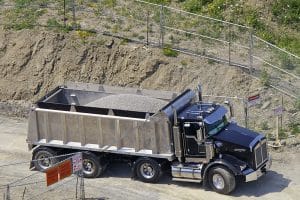Deadly Gravel Truck Collision Highlights Dangers of Rural Intersections
 Truck and tractor-trailer crashes are not uncommon; they happen every day across the country. A recent accident in California, however, was so tragic and catastrophic that at least 13 lives were lost in a crash that involved only two vehicles – an SUV and a gravel truck. Although authorities are still trying to piece together exactly what happened to cause the accident, this only serves as a warning as to the deadly nature of collisions at intersections.
Truck and tractor-trailer crashes are not uncommon; they happen every day across the country. A recent accident in California, however, was so tragic and catastrophic that at least 13 lives were lost in a crash that involved only two vehicles – an SUV and a gravel truck. Although authorities are still trying to piece together exactly what happened to cause the accident, this only serves as a warning as to the deadly nature of collisions at intersections.
According to NPR, the Ford Expedition SUV pulled in front of the truck at an intersection, leading to a collision. California Highway Patrol Chief Omar Watson said, “At this point, it’s unknown whether or not the Expedition stopped at the stop sign, but it did enter the intersection in front of the big rig.”
Rural roads and rural intersections can be deadly
A quick look at the intersection of the crash shows a familiar sight: a rural road intersecting with a rural state highway. It looks a lot like the intersection of US 85 and ND-200, except our roads have streetlights, and the intersection where the collision occurred does not.
About 57 million Americans live in rural areas, which accounts for approximately 17% of the entire population of 330 million people in the country. The percentage is higher here, in North Dakota; about 39% of our population is classified as rural. In 2019, according to the Insurance Institute of Highway Safety’s data:
- 16,340 traffic-related deaths occurred on rural roads (out of 36,096 traffic-related deaths in total);
- 983,853 million miles were traveled on rural roads (out of 3,261,772 million miles traveled in total); and
- “The rate of crash deaths per 100 million miles traveled was about 2 times as high in rural areas as in urban areas,” averaging about 1.66 traffic-related deaths out of every 100 million miles traveled (compared to 0.86 for urban areas, and 1.11 in total).
According to the Federal Highway Administration (FHWA), “each year roughly one–quarter of traffic fatalities and about one–half of all traffic injuries in the United States are attributed to intersections.”
So what does this data tell us? That rural roads – especially rural intersections – account for a considerable number of traffic injuries and fatalities. Given that North Dakota’s rural areas make up almost two-fifths of our total land area, travelers need to be extra aware of the dangers they face while on the roads.
What makes rural roads so dangerous?
Every road is different, so there is no one defining cause of rural car crashes. Rural roads do have some similar characteristics, however, that can pose risks to drivers:
- Unpaved surfaces. Rural roads are less likely to be paved. Dirt and gravel roads pose risks, especially during bad weather. Road erosion can lead to bumpy surfaces, unseen potholes, and steeper drop offs on the side. They may not have shoulders, either, for emergency pull-offs.
- Improper signage. Rural roads may not be properly marked with road signs, which makes navigation difficult. If one-way roads aren’t defined, the risk of a head-on collision increases. If the speed limit isn’t posted clearly, speeding drivers may take curves too quickly. In some areas, a GPS won’t even recognize the road, let alone be able to help someone find his or her way to another road.
- Low visibility. Often, rural roads are curvy, dark, and filled with hills. This decreases visibility even during the day, which can lead to crashes.
- Farm equipment and heavy machinery. You’re likely to find people driving tractors, backhoes, or other types of equipment and machinery on rural roads. While these other vehicles pose no inherent risks on their own, the low visibility of the roads can make it difficult to pass them safely.
Lack of traffic signals can lead to deadly collisions
Per the FHWA, failing to obey traffic signs can lead to severe intersection collisions:
The most severe crash type at unsignalized intersections is a right-angle crash. This crash type typically occurs when two vehicles approaching at a perpendicular angle collide due to one vehicle failing to stop or yield right of way from a Stop or Yield sign. In recent data analyses commissioned by the Federal Highway Administration (FHWA), every 100 reported angle crashes at unsignalized intersections resulted in approximately 1 to 3 fatalities and 5 to 15 serious injuries.
“Unsignalized” intersections – ones without traffic signals – account for about 80% of all intersection crashes. The fatal collision in the NPR story occurred at an unsignalized intersection.
How can you reduce your risk of a crash at an unsignalized intersection?
While you cannot control the behavior of other drivers, you can take some steps to reduce your risk of an intersection crash:
- Always make a full stop at stop signs and look both ways before entering traffic.
- Don’t ignore yield signs; slow down, look for oncoming traffic, and stop if it is unsafe to proceed.
- Make sure your headlights/daytime running lights are on while driving in rural areas, to make yourself more visible.
- Turn on your “do not disturb” function on your phone, and keep it in your central console, purse, or glove box.
- If you start to feel tired, find a safe place to rest for a few hours. Or, park your car someplace safe and trusted, and call for a ride from another driver.
At Larson Law, we have decades of experience representing the people of Minot, Bismarck, and the surrounding areas. If you were injured in a crash at an intersection, let our injury attorneys help. To arrange a free consultation, call us today at 701.484.HURT or complete our contact form.

Mark Larson is a Certified Civil Trial Specialist and Certified Civil Pre-Trial Specialist focusing on personal injury, car accidents, wrongful death, and oil field claims. Since 1979, Larson Law has served the injured throughout North Dakota. Read more about Mark V. Larson.
